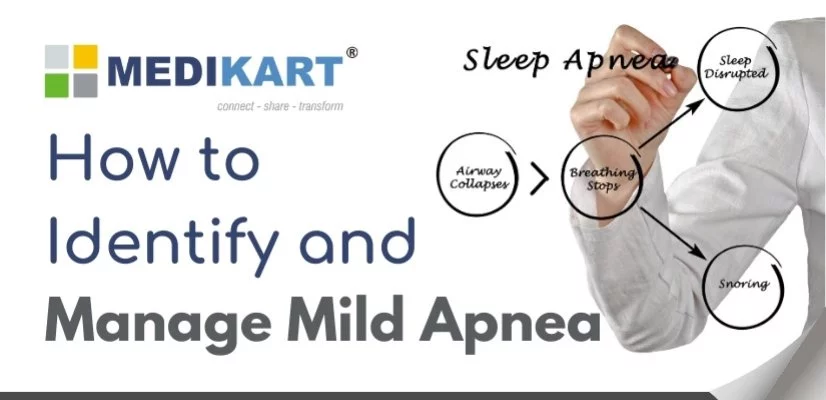How to identify and manage Mild Apnea
Sleep apnea is a serious sleep disorder in which a person’s breathing is disrupted while they are sleeping. Untreated sleep apnea causes people to stop breathing periodically during the night, often hundreds of times. Obstructive Sleep Apnea (OSA) is classified as mild, moderate and severe upon diagnosis.
The AHI is the number of apneas or hypopneas reported per hour of sleep during the research. It’s usually measured in terms of the number of events per hour. The severity of OSA is classified as follows based on the AHI:
- None/Minimal: AHI < 5 per hour
- Mild: AHI ≥ 5, but < 15 per hour
- Moderate: AHI ≥ 15, but < 30 per hour
- Severe: AHI ≥ 30 per hour
What is Mild Sleep Apnea?
Sleep apnea is a chronic disorder that is classified as mild, moderate, or severe upon diagnosis. Mild sleep apnea is especially important to treat when it occurs with other conditions, such as high blood pressure or stroke. Those who suffer from obstructive sleep apnea (OSA) have their airways repeatedly blocked and their breathing interrupted while sleeping. If you have mild sleep apnea, you will have fewer breathing disruptions per hour of sleep than someone who has moderate or severe sleep apnea. “A person with mild sleep apnea has 5-15 breath-holding or shallow breaths per hour,” according to the AASM
Mild Sleep Apnea Symptoms
Some of the basic Mild apnea symptoms are:
- Snoring
- Daytime drowsiness/lethargy
- High blood pressure
- Awakening with a dry mouth
- Morning headache
- Difficulty staying asleep (insomnia)
- Excessive daytime sleepiness (hypersomnia)
- Difficulty paying attention while awake
- Irritability
Mild Sleep Apnea treatment options
Continuous positive airway pressure (CPAP) therapy, which incorporates a machine for eg. CPAP Z1 auto that delivers air flow through a face mask, is the most common treatment for moderate and severe sleep apnea.
Although CPAP therapy is sometimes used to treat mild sleep apnea, it isn’t always required. It all depends on the patient’s willingness to participate. The most prevalent treatment modality is CPAP, but it is far from the sole one. Oral appliance therapy (OAT) is a dental device that moves the jaw forward to treat sleep apnea.
Mild Apnea Management can also be managed with lifestyle changes. These could include:
- Losing weight
- Getting regular exercise
- Quitting smoking
- Avoiding alcohol and sedatives
- Sleeping on your side or stomach instead of your back
Nasal expiratory positive airway pressure (EPAP) is another possibility. This consists of a one-way valve that is either placed over the nostrils with an adhesive or implanted inside the nose, combined with a nasal dilator. The valve opens when you take a breath in. When you exhale, the valve almost completely closes, trapping the air in your lungs.
Disclaimer
The information provided is for general knowledge only. Consult your doctor for personalized advice and treatment. Medikart HealthCare not liable for any actions taken based on this info.

